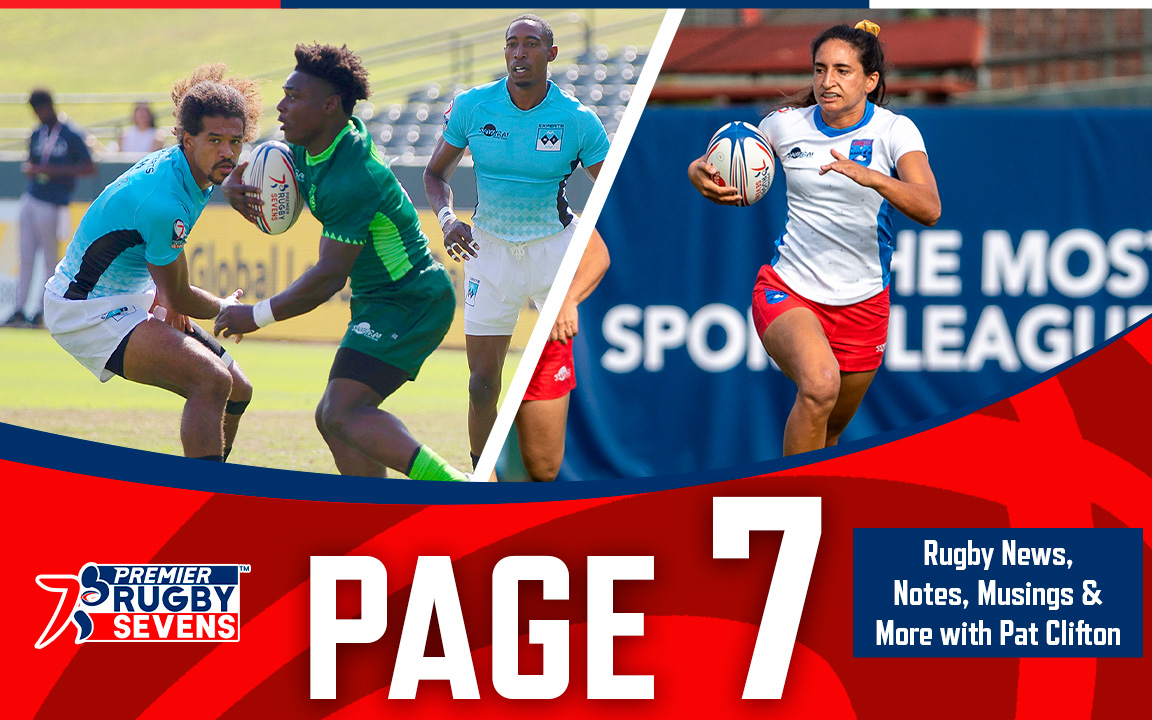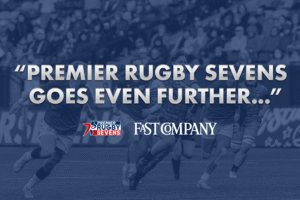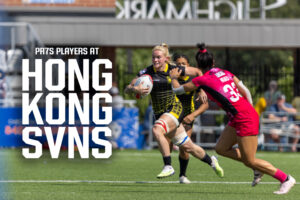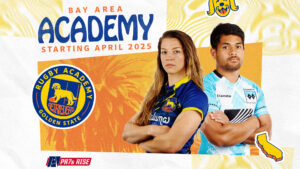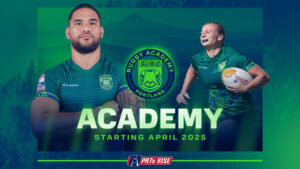The dates are set, venues booked and tickets are on sale. With the news last week that Premier Rugby Sevens would launch its first season with three tournaments in four weeks in world-class venues, the clock counting down to the first-ever professional sevens series is officially ticking.
The significance and magnitude of the moment can’t be understated. In America, when we hear ‘professional sports league’, we think of highly-skilled athletes being paid to train and play for unique team brands against one another in a multi-city competition stretched over weeks leading to a championship. In the sport of sevens, the world over, that had never been attempted until PR7s took it on.
The HSBC World Series is an annual competition between national teams, which doesn’t fit the definition. It’s more in the mold of some of the other global competitions you see from Olympic sports between the Games.
The Rugby Premiership, England’s top 15-on-15 competition, ran a summer sevens series for years before COVID. The format changed over time, but it was scantily televised and the players often came from academies and not the fully professional roster, making it more akin to the NBA’s version of the Summer League — an offseason exercise meant to mine new talent for the main event.
The Rugby Premiership branched out with the World Club 7s in 2013 and 2014, inviting club and professional teams from all over the world to play sevens at famous grounds like England’s Twickenham and Ireland’s Thomond Park, but the competition didn’t operate as a series and lasted just two years.
Before PR7s, no one had attempted to become to rugby sevens what the NFL is to football or to the sport of basketball what the NBA represents. That’s the vision.
The model is a little closer to the Premier Lacrosse League, which just signed its first lucrative broadcast deal, a four-year agreement with ESPN and ABC. Founded in 2019, PLL boasts touring teams unbound by geography, like PR7s.
In rugby sevens, PR7s stands alone as a proper pro league, one designed to complement the World Series. Playing its 2022 season after the conclusion of the World Series and before the Eagles head to South Africa for the Sevens World Cup in August, Premier Rugby 7s and the World Series could conceivably go together like soccer’s Champions League and Euros.
So far this World Series, both the USA men and women sit in fourth place thanks in large part to talent cultivated by PR7s.

This weekend in Singapore, 24-year-old Loggerhead D’Montae Noble will make his international debut. With thighs made of dynamite, the hot-stepping, diminutive playmaker has been a rising star since before his All-American days at Kutztown University. Noble was a standout for the Loggerheads in PR7s’ Inaugural Championship in October, setting up his now Eagle teammate Kevon Williams for two scores, one the top try of the tournament, while also dotting down another of his own.
Noble becomes the fourth PR7s player to debut on the World Series circuit so far this season, following in the footsteps of Expert Logan Tago, Team’s Aaron Cummings and Loonie Sarah Levy. Before PR7s and before they got to the national team, you could only see guys like Noble ball in one-off events like the nationally-televised Collegiate Rugby Championship, or in public parks on the grassroots club circuit. Levy’s talents were even more evasive from the watchful eye.
What separates PR7s from not only the rest of the world’s rugby leagues, but professional sports leagues in general, is real gender equity. That started in year one, with the men and women playing under the same league and team flags, on the same stage and receiving the same pay.
In year two, it takes another giant leap forward with the United Championship. Men’s and women’s champions will be crowned, as you’d expect and as they were in Memphis. But there will also be joint standings leading to the United Championship, so when Naya Tapper scores for the Headliners, it’s not just for the Headliner women, but all of the Headliners.
Let’s use the World Series standings to put this in context. If they had a united championship like PR7s will, and the season ended before Singapore, the men’s champion would be South Africa and the women’s and united champion Australia, whose men sit in third. The USA would be second in the combined standings, showing that while we may not top the table for either the men or women, we have a very competitive program as a whole.
For women, the league’s emergence represents an even rarer opportunity than for the men. Where there is legitimate men’s pro rugby in some form or another on just about every inhabitable continent, there is very little for women. And where there are women being paid to play the game, the pay and investment gaps between them and their male counterparts make the Grand Canyon look jumpable.
Where sevens is only now professionalizing, 15s started its pro journey in 1995. With decades of experience, big paychecks and global broadcast platforms for 15s leagues across Europe and the Southern Hemisphere, there’s some serious competition to become the world’s aspirational men’s rugby league. That’s the goal.
If you grow up playing basketball, whether it’s in Lusaka, Lisbon or French Lick, your dream is likely to play in the NBA. If you grow up playing soccer, chances are you dream of suiting up for Ted Lasso in the English Premiership (Maybe the Lasso bit’s just me).
For men’s rugby players, though, they could believably aspire to a handful of competitions. On the women’s side, PR7s’ path to becoming the apple of every little rugger’s eye, worldwide, is much shorter.
Professional sevens is here. In a big way. In Major League Soccer’s best venues in some of the country’s most exciting cities. Showcasing some of the best talent the world of rugby and the athletic wonderland that is America have to offer. In a uniquely American package. And I can’t wait.
By Pat Clifton
PR7s Insider
